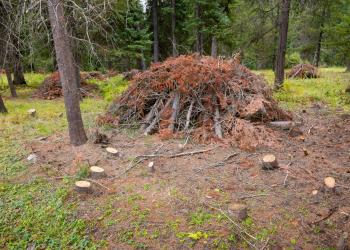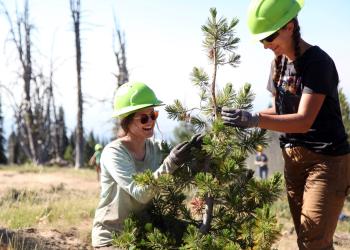Forest Management
Reforestation Strategy

The Forest Service released “Growing and Nurturing Resilient Forests: A Reforestation Strategy for the National Forest System” with the intent to then develop national and regional 10-year implementation plans focused on reforesting needs on the NFS. The strategy and plans will include the challenges, vision and steps the agency will take to successfully increase the pace and scale of reforestation, address existing needs, and anticipate future events. The work also will help the agency meet provisions of the Repairing Existing Public Land by Adding Necessary Trees Act, also called the REPLANT Act. That act provides the Forest Service with funding to address the backlog of needed reforestation on NFS acres.
Shared Stewardship

With over 6 million acres of Idaho’s forestlands designated as “high risk” for insect and disease outbreaks and potential catastrophic wildfire, Idaho’s Shared Stewardship efforts emerged as a result of collaboration between the State of Idaho and the USDA Forest Service—analyzing how the focus of federal and state resources on critically needed treatments can impact at-risk forestlands extending from the national forests across all ownership boundaries. This collaboration was memorialized in an agreement signed in 2018 and now includes the Natural Resources Conservation Service.
Whitebark Pine

In 2022, the U.S. Fish and Wildlife Service published a final rule to list whitebark pine as a threatened species under the Endangered Species Act. Learn more about why the Payette National Forest protects whitebark pine.



